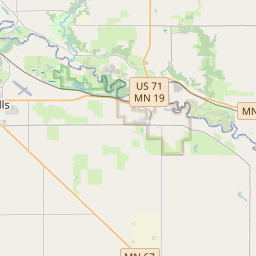Minnesota's Civil War
Historical marker location:






April 12, 1861: The Civil War begins with the Confederate attack on Fort Sumter, located in South Carolina's Charleston Harbor.
April 15, 1861: President Abraham Lincoln issues a call for 75,000 volunteers to serve in the Union Army to suppress the rebellion.
May 24, 1861: The first major land battle, known as the First Battle of Bull Run (or First Battle of Manassas), takes place in Virginia. It ends in Confederate victory.
September 17, 1862: The Battle of Antietam in Maryland becomes the bloodiest single-day battle in American history, with heavy casualties on both sides. The Union forces, commanded by General George McClellan, manage to halt Confederate General Robert E. Lee's advance into Union territory.
January 1, 1863: President Lincoln issues the Emancipation Proclamation, declaring that all slaves in Confederate-held territories are to be set free. However, the proclamation does not immediately free all slaves in the United States.
July 1-3, 1863: The Battle of Gettysburg in Pennsylvania takes place, resulting in a significant Union victory and inflicting heavy casualties on Confederate forces. It marks a turning point in the war.
November 19, 1863: President Lincoln delivers the Gettysburg Address, emphasizing the principles of liberty, equality, and the preservation of the Union.
April 9, 1865: General Robert E. Lee surrenders to Union General Ulysses S. Grant at Appomattox Court House in Virginia, effectively ending the Civil War.
April 14, 1865: President Lincoln is assassinated by John Wilkes Booth while attending a play at Ford's Theatre in Washington, D.C.
May 10, 1865: Confederate President Jefferson Davis is captured, signaling the collapse of the Confederate government.
December 6, 1865: The Thirteenth Amendment to the United States Constitution is ratified, officially abolishing slavery throughout the country.
While this timeline provides an overview of key events, it is important to note that the Civil War spanned over four years, from 1861 to 1865, and encompassed numerous battles, campaigns, and political developments that shaped the course of American history.
Minnesota was the first state to offer voter registration on the day of an election in 1974.
In 1851, the Treaty of Traverse des Sioux was signed, opening up the land to settlement by white settlers. This marked the beginning of a tumultuous period, as conflicts between the Dakota and the settlers erupted, culminating in the Dakota War of 1862. Following the war, many Dakota were forcibly removed from the area, further reshaping the county's demographics.
As white settlement continued to grow, Renville County developed into a major agricultural region, with a reliance on farming and livestock production. The arrival of the railroad in the late 19th century further facilitated agricultural development and boosted the local economy. The county's rich soil and favorable conditions made it a prime location for corn, soybeans, and wheat farming.
Throughout the 20th century, Renville County experienced both challenges and progress. It was heavily impacted by the Great Depression, but its agricultural sector remained resilient. Advances in technology and mechanization brought further changes to farming practices, leading to increased productivity. The county also played a significant role in the development of wind energy, with numerous wind farms established in recent years.
Today, Renville County continues to be an agricultural powerhouse, supporting a vibrant farming community. It also boasts natural beauty, with parks, lakes, and recreational opportunities that attract visitors and residents alike. The county's history is a testament to the resilience and adaptability of its people, who have consistently transformed challenges into opportunities for growth and progress.
Renville County Timeline
This timeline provides a glimpse into the major events and milestones that have shaped the history of Renville County, Minnesota.
- Renville County established on February 20, 1855
- First settlers arrive in the late 1850s
- Renville County becomes a popular area for fur trading in the 1860s
- Dakota War of 1862 leads to the evacuation of white settlers and the county becomes deserted
- Settlement begins again in the late 1860s
- Renville County officially organized in 1866
- Railroad construction reaches the county in the 1870s, improving transportation and allowing for agricultural growth
- Agriculture becomes the main industry in the late 19th century
- Growth of towns and communities leads to the establishment of schools, churches, and other institutions
- Renville County sees population growth in the early 20th century
- Great Depression and Dust Bowl cause economic struggles in the 1930s
- Renville County experiences post-war growth and development in the mid-20th century
- Modernization and diversification of industries in the late 20th century
- Renville County celebrates its 150th anniversary in 2006